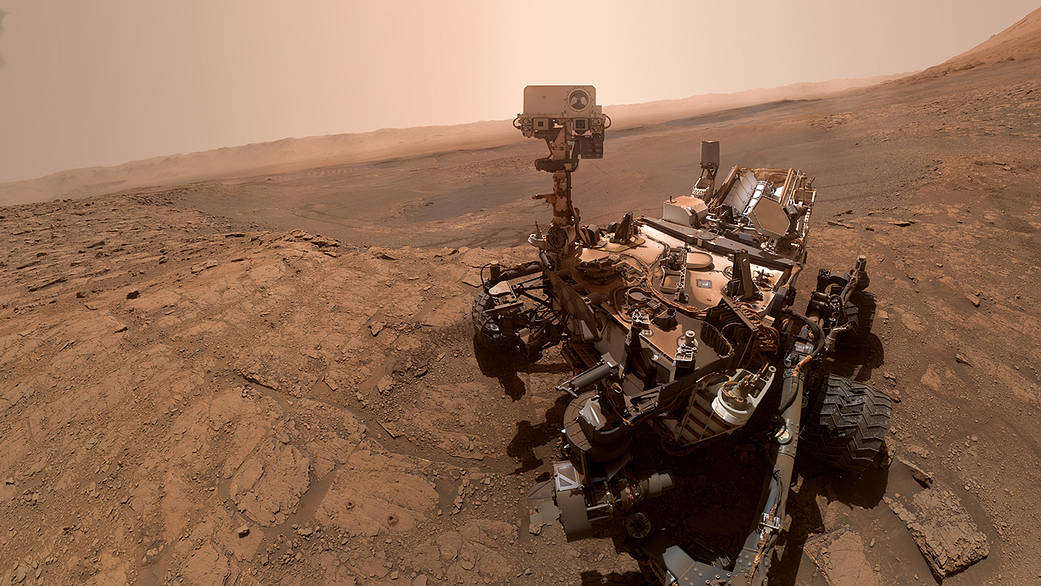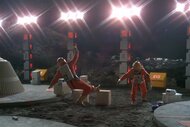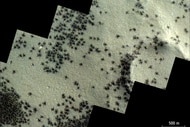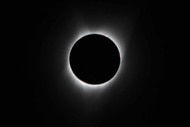Create a free profile to get unlimited access to exclusive videos, sweepstakes, and more!
Mars has built-in radiation shelters if humans ever want to go there

Mars has a big butte. Actually, it has many of them that block out at least some of the killer radiation constantly bombarding its reddish wastes.
Not that the Red Planet is safe to explore by any stretch of the imagination. Even new spacesuits for the Moon (with its notoriously high surface radiation) haven’t been completely figured out yet. As the radiation-proof tech for those suits gets more advanced, it might soon block out enough of that radiation for safer exploration. Maybe the surface radiation on Mars is considerably less than the Moon's, but it is not exactly somethings spacecraft or humans should be exposed to.
However, there is something already on Mars that might give rovers—and eventually astronauts—an assist against solar and cosmic rays.
Mars-tronauts may find a way to live underground in one of the planet’s enormous lava tubes, but they will still have to emerge for exploration and expose themselves to radiation that Earth’s magnetic field protects us from. Maybe they will be better off exploring in the shadow of one of the planet’s many buttes. It did provide the Curiosity rover with some shade.
Researcher Jingnan Guo University of Science and Technology of China (USTC) of the Chinese Academy of Sciences, and her colleagues from the MSL (Mars Science Laboratory) team, have been looking into the protective potential of buttes, and led a study recently published in Geophysical Research Letters. Mapping the shaded areas gave Guo better idea of this. She saw how much sky was being blocked whether you are looking towards the north or south by averaging Curiosity’s, depending on its position.
“Imagine you are standing in a valley and you are looking around and see some sky is blocked by the butte near you so that you are not looking at 100% of the sky,” she told SYFY WIRE. “When you look towards the horizon, the top tip of the butte determines an obscurance angle from the horizon.”
Because the sky is actually more of a dome and not a round circle, Guo had to keep that in mind when trying to see just how much of the unprotected Martian sky was blocked from reaching Curiosity. She then figured out the blocked part of the sky from each zenith angle (when something is directly above your head, it has a zero degree zenith angle with respect to you). How much is actually blocked can go from none at angles under 60 degrees and around half at angles of 80 degrees. In the end, that came out to around the butte covering Curiosity from about 19% of the sky, but it didn’t end there.
“An energetic particle in space needs to go through the Martian atmosphere to reach the surface of Mars, and it may lose none, or some or all of its energy,” Guo said. “Sometimes, the incoming particles also change or split into other lighter particles and reach the surface. This depends on the incoming particle energy and type, along with the atmosphere.”
The atmospheres of Earth and Mars are obviously vastly different. Without any sort of inner dynamo to keep a magnetic field going, Mars barely has an atmosphere in comparison to Earth. This is why radiation was so much more easily able to obliterate what atmosphere it did have and blast its surface into a desolate and inhospitable place. Whatever Mars has left of an atmosphere still does not have the same thickness everywhere. Depending on what direction you’re facing, you might get hit with more radiation if you’re positioned towards a thinner part of its atmospheric remnants.
For making calculations, Guo allowed the assumption that the structure of the Martian atmosphere is about the same at every azimuth angle, but that its thickness, meaning all the atmospheric mass that gathered above Curiosity, increases with the zenith angle and is much less than the mass above it would be is if it was facing the horizon. Simulations that processed the physics of radiation interaction helped come up with the final Martian surface radiation without any of the sky being blocked.
“Together with the previously obtained portion of sky which is also a function of zenith angle, we can estimate at each zenith angle, when there is the actual blockage by the surface structure, how much radiation is stopped by the nearby butte,” said Guo. “This gives the value of about 12% after considering all zenith angles, which is more than the observed 5% of decrease, but also expected from the model.”
There is a reason for this difference. The downside of a butte is that it might block radiation coming directly from above, but it alternatively contributes to more albedo radiation. This is the secondary radiation that bounces off the surface and right into your face.
Those spacesuits are going to need some major upgrades.














